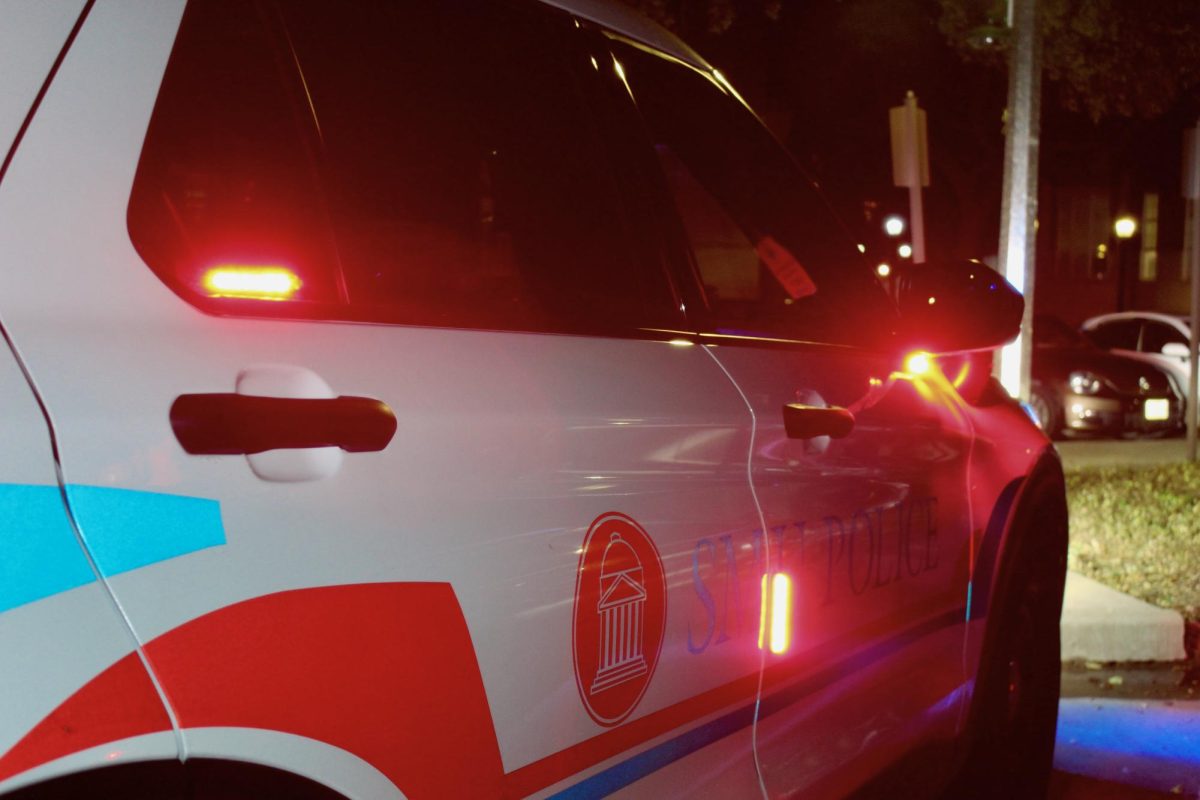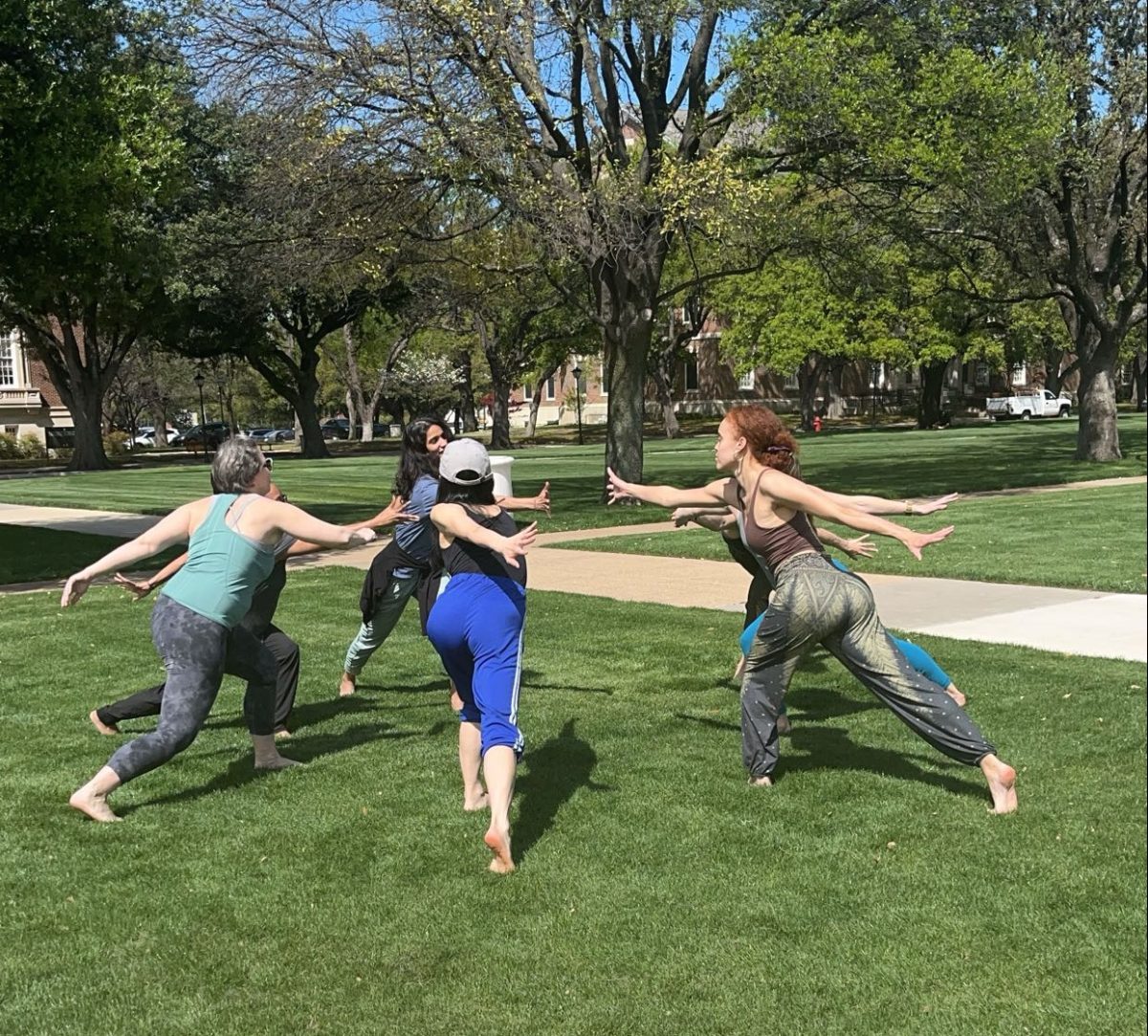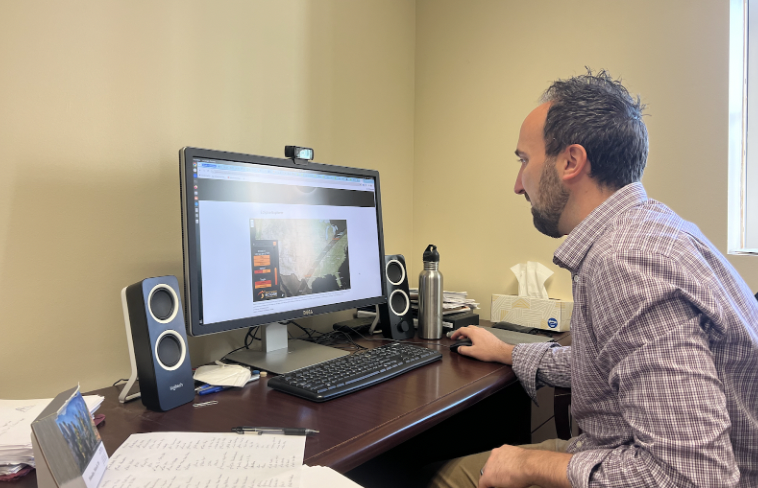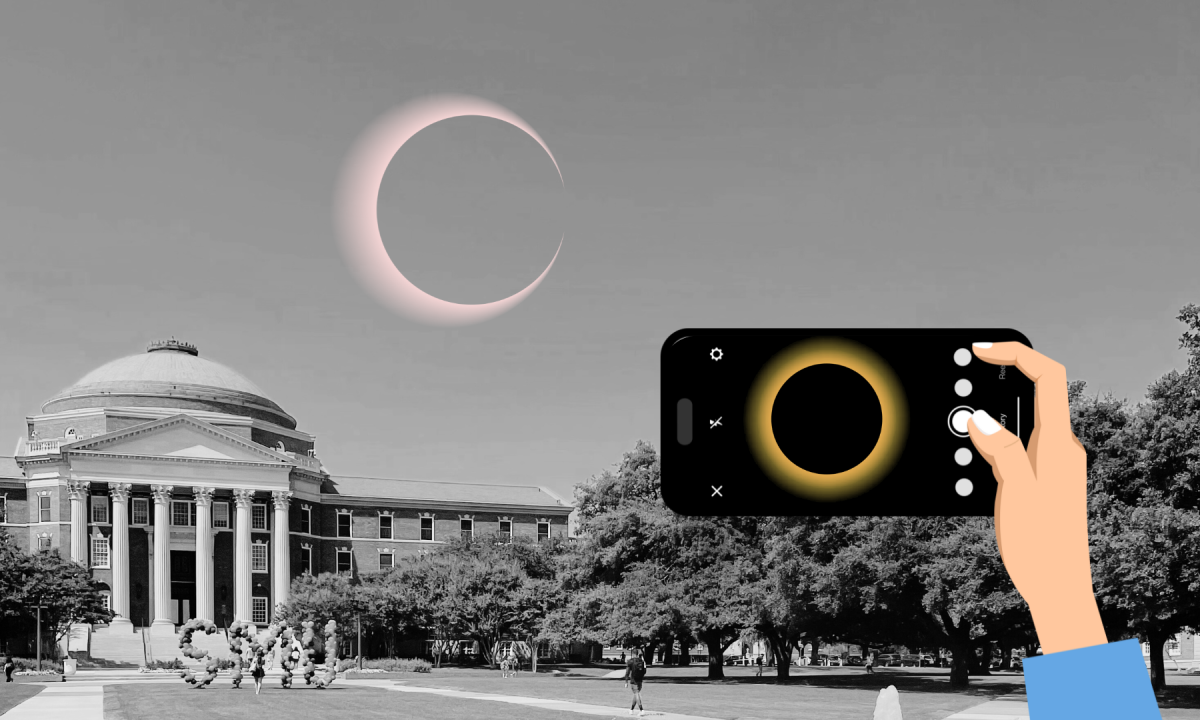An atmosphere of tranquility permeates the lush, green landscape of Dallas Hall lawn. Students lying on picnic blankets bask in the sun’s warmth and a crisp, morning breeze rustles through the trees’ thin branches. In the middle of this activity, a group of young students are seen dancing to the sounds of distant laughter, buzzing creatures, and a melodic lull playing from the speakers—each dancer feeling a spiritual connectedness to the world around them.
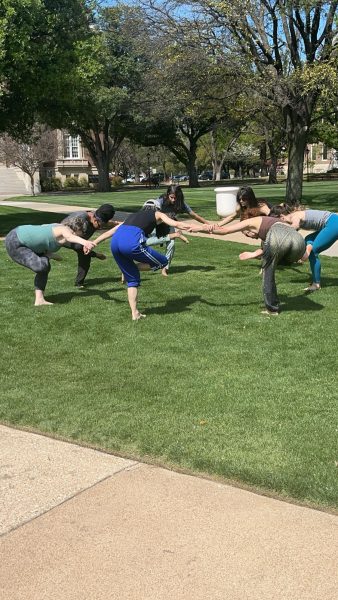
New York-based climate activist group, Time Lapse Dance, visited SMU to promote their annual Communi-tree Dance Workshop on March 20. This event was created and directed by founder Jody Sperling, who prides on using dance as a method of advocacy against climate change.
“Our mission is to think about how dance can help us grapple with our changing world and the climate crisis,” Sperling said. “We look to use dance to sort of envision and enact a more sustainable, equitable future.”
Sperling, unlike other dance instructors, incorporates research she gathered about trees into her choreography. This unique blend of science and artistic expression has helped her create messages that debunk the misconception that humans are not a part of nature.
“One of the key things that we really need to do to solve these very immense problems that we’re facing is to […] understand that we are part of nature,” Sperling said. “We cannot be separate from the ecologies that we exist in. I think that dance can really help us reconnect with the natural world and understand the nature within us.”
One area of research Sperling views as an integral component in conveying the complexities of trees in their choreography is Eco-Kinetics: a way of thinking about human movement in relation to the natural world. This methodology was recently exhibited in Time Lapse’s latest production, “Arbor,”where each routine explores connections humans have with trees.
“One of the things that scientists have discovered is that trees communicate with each other: they send each other nutrients, they share resources, they nurture their young, they warn each other of danger,” Sperling said. “What’s interesting about trees too is you see this one tree and think ‘Well, that’s just one thing.’ But when you begin to realize that this tree depends on a network of fungi for its sustenance then you realize it’s a composite organism.”
Sperling compares trees’ complex inner network to that of the human composition. The body, like trees, relies on trillions of cells and gut bacteria for optimal function.
“We have trillions of cells in our body, and we rely on our gut bacteria,” Sperling said. “All of those organisms are collaborating to make you have this illusion that you are one being.”
Yet another facet that Sperling incorporates into her pieces is the intimate relationship trees have with another. Sperling believes this connection reflects the intimate relationships humans have with one another:
“What we’ve come to realize is that we are really deeply, intimately connected with each other,” Sperling said. “That’s where the idea of Communi-tree comes from: trees can help us model being good community citizens.”
Composer Matthew Burtner applies a similar methodology when creating pieces for the dancers. Like Sperling, he uses sounds emitted in the wilderness to come up with an abstract, techno-esque style of music.
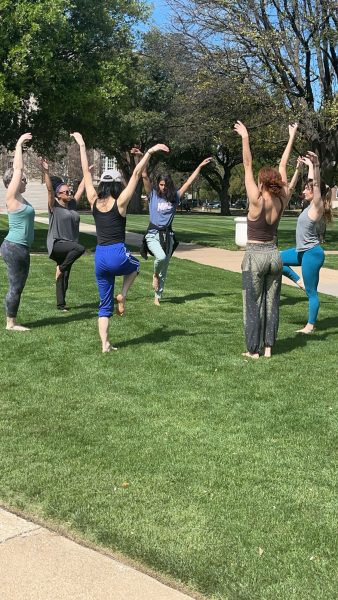
“I usually start with the environmental systems and then I try to bring that into human music and let it really influence human styles,” Burtner said. “The piece for trees is different than the piece for plastics: There’s something kind of playful and maybe even trashy about the plastics ‘cause we’re doing recycling, but then the trees are really about a counterpoint and the microsable networks.”
Dancer Frances Barker values Sperling’s eagerness to implement Eco-Kinetics into the choreography. With Burtner’s music playing softly in the background, she conveys Sperling’s idea of connectedness–a concept that is present in all living organisms.
“We do try to do the same thing when we’re dancing together as a group: making sure that we are aware of one another and making sure that we are connected being when we need to be a connected being,” Barker said. “Even if we are in a separate space and we’re far from each other on stage, we’re still connected, no matter how far we are.”
For more information about Time Lapse Dance, visit @time__lapse__dance on Instagram.




